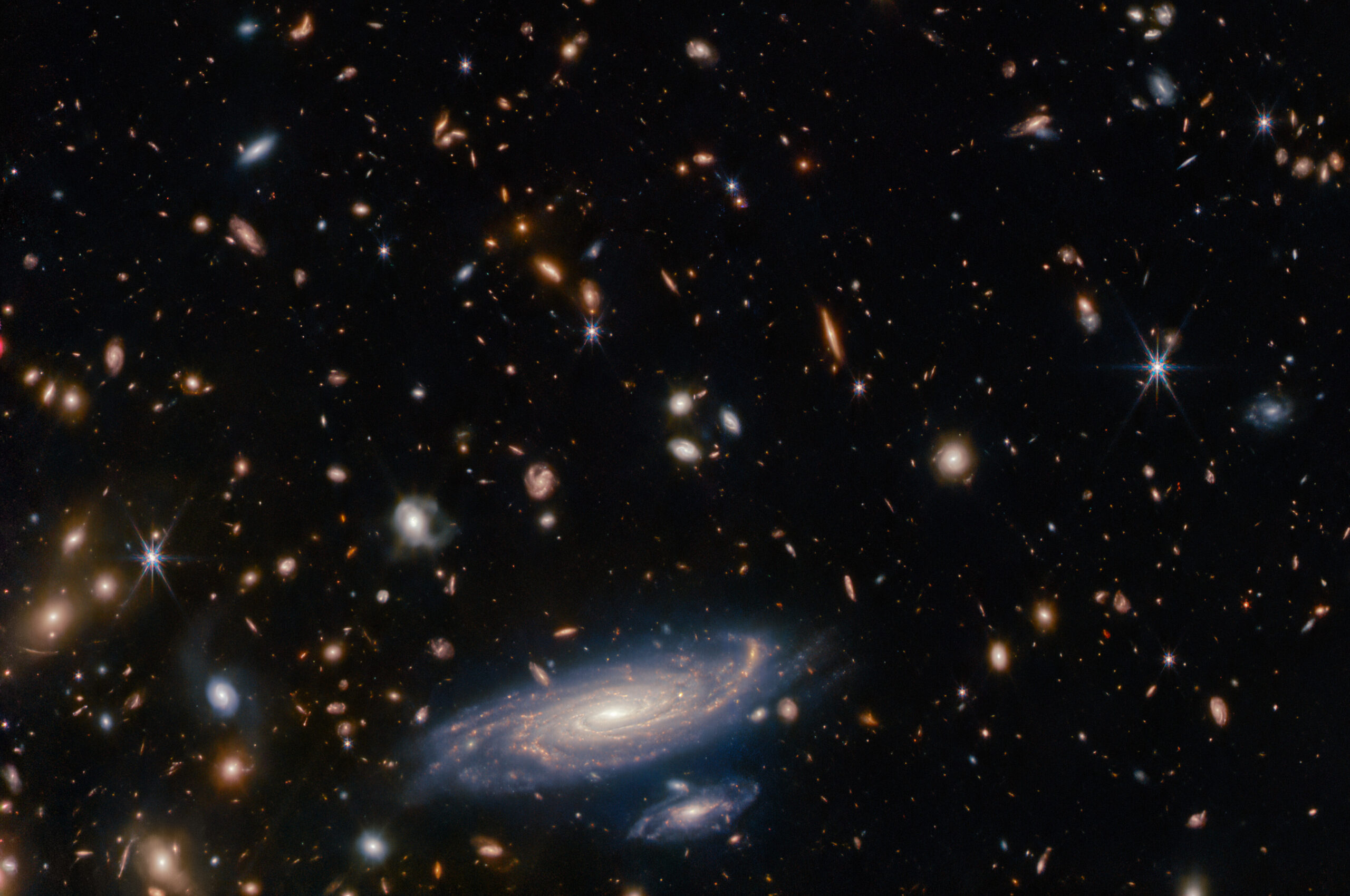The Surprising Expansion History of the Universe
March 25, 2025
18:30 CET
University of Bern,
Institute für exakte Wissenschaften,
Hörsaal A 006,
Sidlerstrasse 5, 3012 Bern
‼️ Due to the speaker’s request, the talk will not be live-streamed or recorded. We appreciate your understanding and look forward to your participation in person.
Over 20 years ago, the instrument teams for the James Webb Space Telescope (JWST) outlined comprehensive science programs to answer to key questions concerning the origins of stars and planets, with implications as well for the origin of life.
Computer simulations of the universe have been in common use since the 1980s, and are now a vital tool in helping us interpret data from increasingly powerful telescopes. Amongst other things, simulations have helped establish the case for dark matter and dark energy, and have been key to creating a broad consensus around the idea that galaxies start small and grow over time through merging. The speaker reviews in outline how these simulations work, and highlight that a key difficulty in understanding their results is to untangle cause and effect. For example, the observed diversity of different galaxy sizes, shapes and colours can be reproduced in a statistical sense, but there is still considerable uncertainty around which causal processes give rise to this diversity. The speaker explains how exerting careful experimentation with the initial conditions for our simulations, which represent conditions shortly after the ‘big bang’, we can start to address these uncertainties. We call this technique ‘genetic modification’, since it loosely corresponds to controlling the genes of our virtual galaxies, to see how the galaxies mature and develop in response. This in turn helps to build a more complete physical picture of how galaxies mature over time, with carefully quantified uncertainties. The speaker discusses how such efforts are vital to making sense of new observations from cutting-edge and future facilities like Gaia, JWST, ELT, SKA and LISA.
In this last year, the Pantheon+ and SH0ES teams released likely our last measurements of the expansion history of the universe. On one hand, constraints from Pantheon+ show a universe consistent with the Lambda-CDM model, where dark energy can be described by a cosmological constant. On the other hand, constraints combining Pantheon+SHOES data find a high value of the Hubble constant, now 5sigma away from the value inferred using Lambda-CDM from measurements of the Cosmic Microwave Background. How can both these statements be true? In this talk, the speaker goes over these separate but overlapping measurements, and discussess how we can have tensions with some parts of the cosmological model but not others. The speaker discusses possible explanations to the Hubble tension, and goes over how other tensions have arisen in cosmology. Finally, the speaker talks about how new telescopes, like the James Webb Space Telescope, can help resolve these controversies.
Dark matter is believed to comprise five-sixths of the matter in the universe, and is one of the strongest pieces of evidence for new fundamental physics. But dark matter does not interact directly with light, making it very difficult to detect except by its gravity. It’s described how various properties of dark matter could lead to observable signals, and how we can attempt to identify those signals from telescope observations. The speaker gives examples of cases where possible signals have been seen, but their origin is not yet fully understood. Furthermore, the speaker discusses how solving the puzzle of those observations will advance our understanding of our Galaxy and cosmos, either by revealing properties of dark matter or providing new insights into astrophysics.
